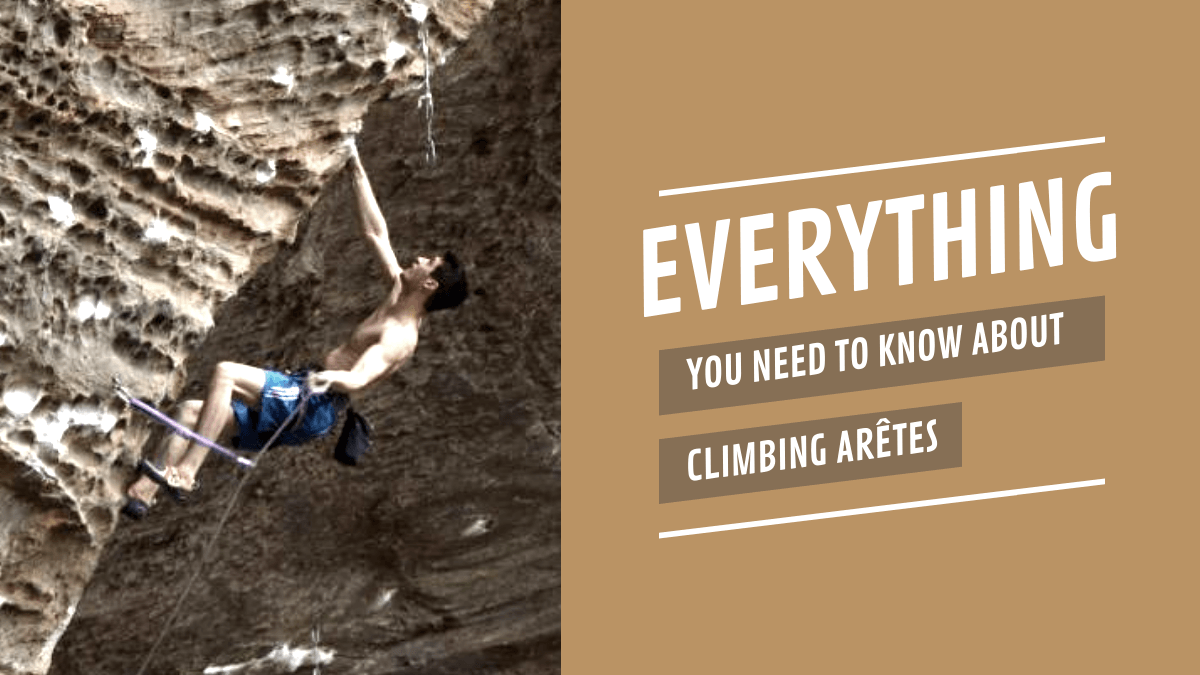Everything You Need to Know About Climbing Arêtes

Have you tested your skill on arêtes? Owing to the mental and physical challenges that come with it, arête climbing is popular to most adventure-seeking climbers.
Climbing arêtes can be as rewarding as it is challenging, and it requires special techniques. Learn how to do it in this guide.
Before You Start, Take Time to Study the Arête
An arête is a sharp rock corner formation that happens as a result of erosion.
Unlike the typical rock climbing surface where you have many footholds and handholds to use as you go up, an arête has sparse footholds and handholds. You use corner holds and switch sides if one side proves too difficult.
Even for the most experienced climber, an arête can be quite strenuous.
Like any route, it is advisable that you draw out a virtual path from the base. This way, you are able to figure out where you will hold on to using your hands and your feet on your way up.
Find Places to Rest
It may only be a few feet high but make no mistake and assume that getting to the top will be easy.
One small miscalculation and you could easily lose grip and fall off. To avoid this, try and locate a sizeable foothold or a jug handhold.
Here, you can take a break and rest for some time if you need to recover and re-energize.
Make Use of the Layback Technique
For an arête that has very few holds to help keep you balanced, you have to use your hands and your feet on the same holds, a technique referred to as layback.
It requires a lot of balance to pull off this technique. But once you master it, it is going to keep you from sliding or from falling.
Proper Hand and Foot Placements
Use your hands to feel the length along the edge of the arête until you find a position that’s comfortable enough for you to use as a handhold.
On the smear surfaces, you can find small hollows or dents to use as holds for your hands and feet during the layback technique.
Want to Avoid Barn-Dooring? Use Face Holds
In arête climbing, the barn-dooring effect is when your body swings towards your hands and feet while suspended. As you swing further, you could lose balance and fall off.
The face hold is a trick not many climbers use but one that can counter the barn-dooring effect quite easily. It happens when you press your face on a flat arête surface as you find a place to hold on to with your feet or your hands.
Perfect Your Foot Climbing Using Toe, Heel, and Calf Hooks
Footholds are only helpful if you use all possible parts to help you grip or hold. Foot climbing techniques require that you use your calf, toe, and heel as hooks to climb difficult arêtes.
Place your foot or your entire leg around the edge of an arête to free your arms or hands as you reach for a higher hold.
Become an Arête Climbing Master
It takes a lot of practice, patience, and composure for a person to master the art of arête climbing. Above are a few tips and tricks to use to maneuver any arête challenge.
Looking to buy quality arêtes climbing products and accessories? Find our products at any of the authorized retail stores located across the USA.




